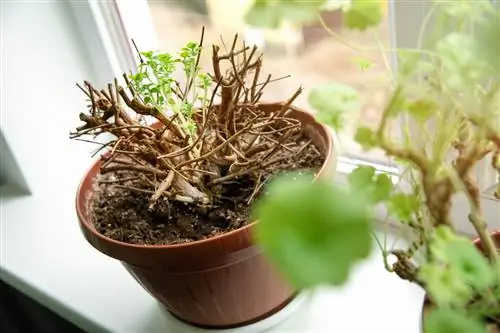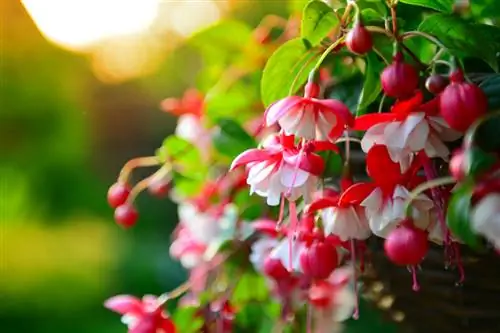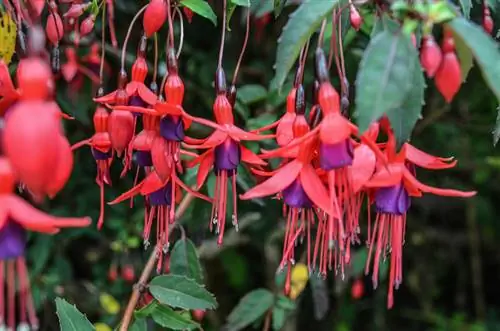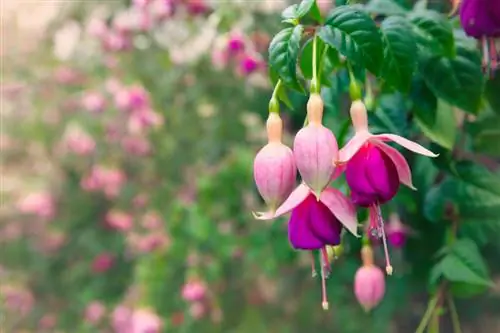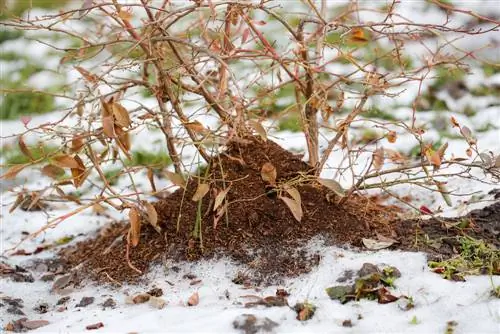- Author admin [email protected].
- Public 2023-12-16 16:46.
- Last modified 2025-01-23 11:22.
Fuchsias (Fuchsia) are popular flowering plants on the balcony and in the garden. But even hardy varieties are not immune to severe frost. Find out in this article how you can save a frostbitten fuchsia and how to protect it properly.
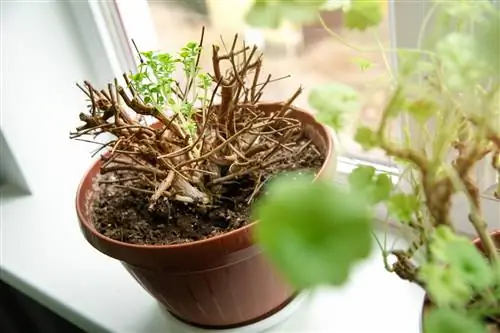
Can I still save my frozen fuchsia?
For potted plants, you should place the affected plantin a suitable winter quarters, cut back the frozen parts of the plant and wait until spring. If the damage only occurs in spring, you should wait to see whether the plant recovers and cut back if necessary.
Why does frost damage fuchsias?
If the water in the delicate lifelines of the fuchsia freezes,the cells burst because the volume of the water expands when it freezes. The affected plant parts die and must be removed. With a bit of luck, the plant will survive and sprout again in spring. Young plants and new shoots are particularly sensitive to frost. If the winter is cold and dry, woody fuchsias are also at risk. They don't freeze, but they dry out because the roots can't absorb water from the frozen ground.
How do I protect my fuchsia from frost outdoors?
The winter in Germany is also too cold for the fuchsia varieties that are offered as hardy. They also need additional protection from frost outdoors. The root ball in particular must be protected from ground frost. Athick layer of mulch made of warming straw or bark mulch is suitable for this. Never overwinter hardy fuchsias in pots outdoors. The roots in the pot are particularly sensitive to frost.
How do you protect fuchsias in a pot from frost?
Fuchsias in pots should be brought into the house in good time before the first frost. Place the plant in acool but protected place (8 to 10 degrees Celsius) and water sparingly. The container plant's winter quarters should definitely be frost-free. Since the plant is in the dormant phase, it should not be fertilized. In spring it can be put back outdoors after the last late frost.
Which species are particularly resistant to cold?
There are both winter-hardy and very cold-sensitive fuchsia varieties. The so-called winter-hardy varieties are usually hybrids that originate from the South American Andes. Fuchsias grow there at altitudes of up to 3000 meters. They are particularly well adapted to these conditions. However, they cannot survive a harsh winter without protection. The following varieties are particularly hardy:
- Standing Fuchsias (Ballerina, Flash, Blue Sarah, Delicate Blue, Schoene Helena, Blue Grown, Garden News)
- Semi-trailing fuchsias (Delicate Purple, Lena, Papoose)
Tip
Time heals many wounds
In most cases, time helps. Despite minor frost damage, many plants recover after a good winter and sprout fresh again in spring. They collect all their energy in the roots and sprout again in the growth phase.

